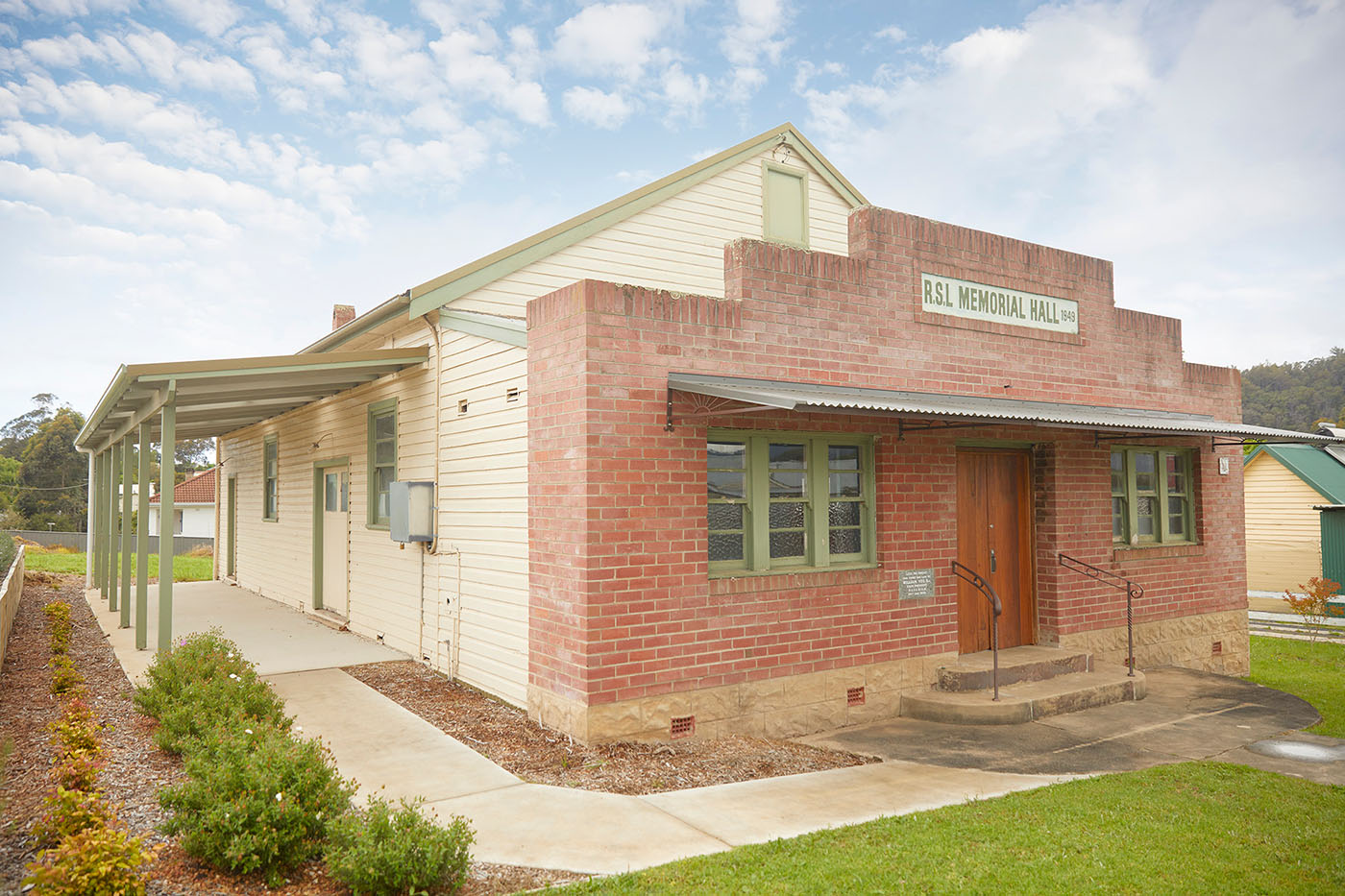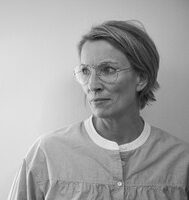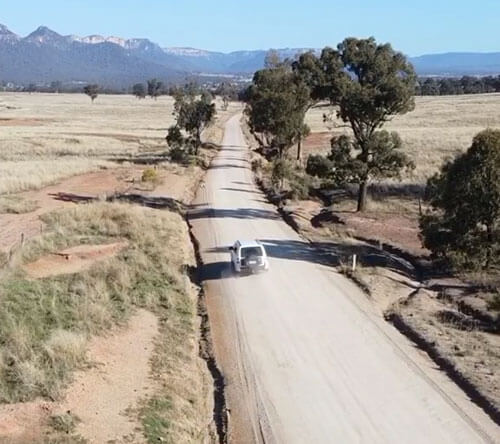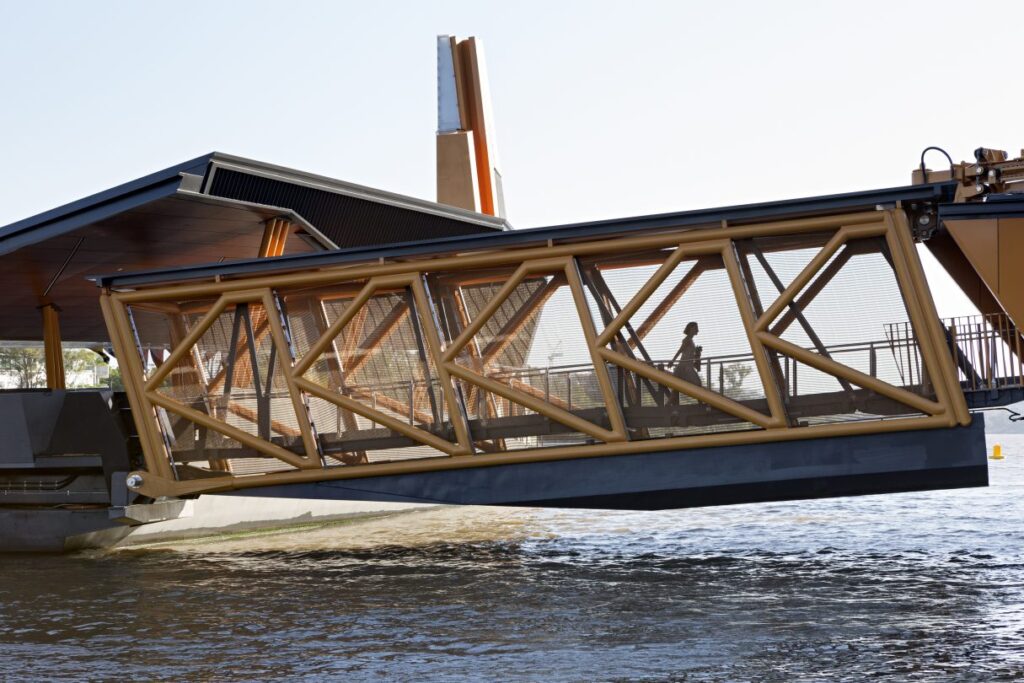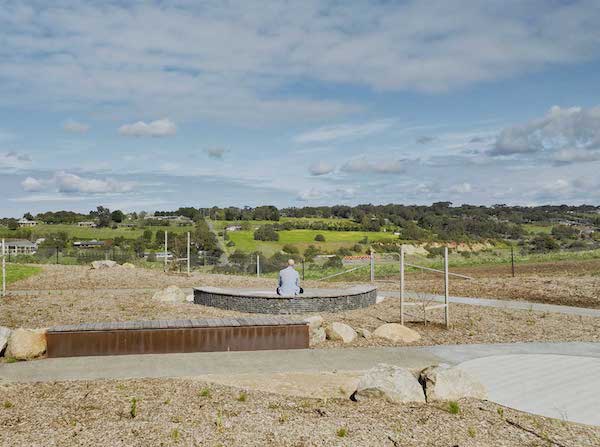How a displaced community hall will be given a new lease on life.
Community halls are part of the fabric of our local suburbs and towns but over time these useful spaces can deteriorate due to a lack of funding or resources. In remote regional towns, the value of these spaces is even more pertinent, especially when access to meeting places is few and far between. This was the case for the Cobargo RSL Memorial Hall. Thanks to Architects Assist, the hall is now on the way to being re-developed and given a second life.
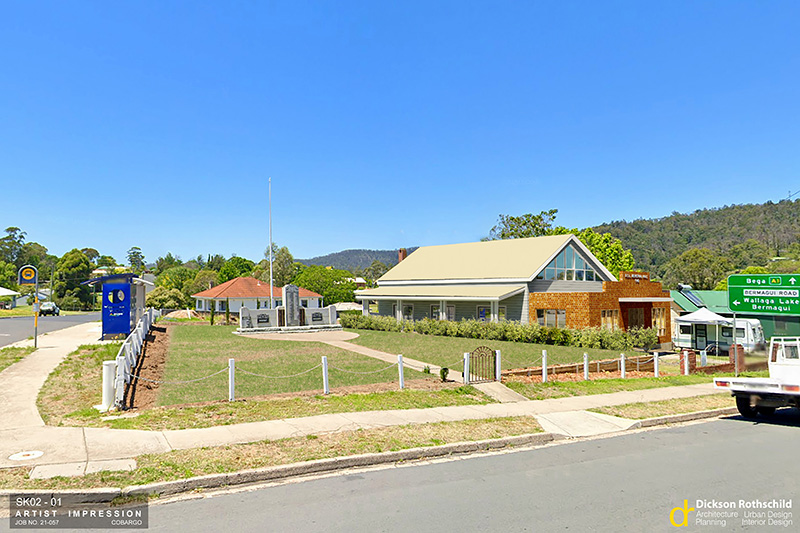
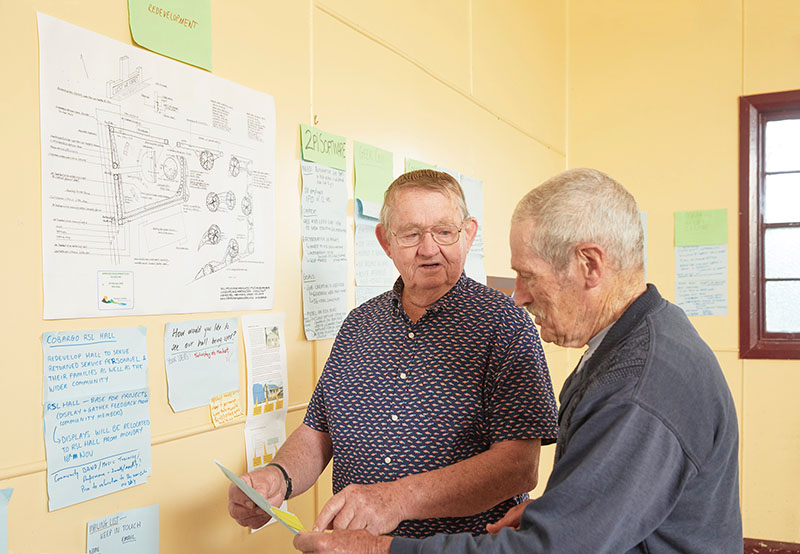
Cobargo is in the south-east of NSW in the Bega Valley Shire 386km south of Sydney. The town was heavily impacted by the Black Summer bushfire disaster. Given the remote location of the town and what they have been through – having access to functional community meeting spaces is important now and for the future.
The Cobargo RSL Memorial Hall was constructed in 1949 and is one of only a handful of central meeting places for Cobargo locals. The only other establishment in town is the local pub, and this is not an appropriate environment for the meeting requirements of locals, which includes important community meetings to discuss critical issues like disaster recovery and planning.
This building has significant historical significance to the town but lacks the required amenity to make it a meeting place which is not only functional and safe but also self-sustaining.
With the help of the Institute’s Architects Assist program, Dickson Rothschild Architects, Taubmans and not-for-profit GIVIT, the RSL Sub-Branch Committee have been receiving pro bono support with plans, product supply and advice to support the redevelopment of this important local establishment.
With the help of these networks, the group were also able to secure one of the grants offered by the Federal Government under the Black Summer Bushfire Recovery Program. This will fund the re-development. Site preparation works have now begun, with construction due to be complete in 2024.
We spoke to Nigel Dickson, Founder and Managing Director of Dickson Rothschild Architects about the importance of pro bono work to his team, and his involvement in this project.
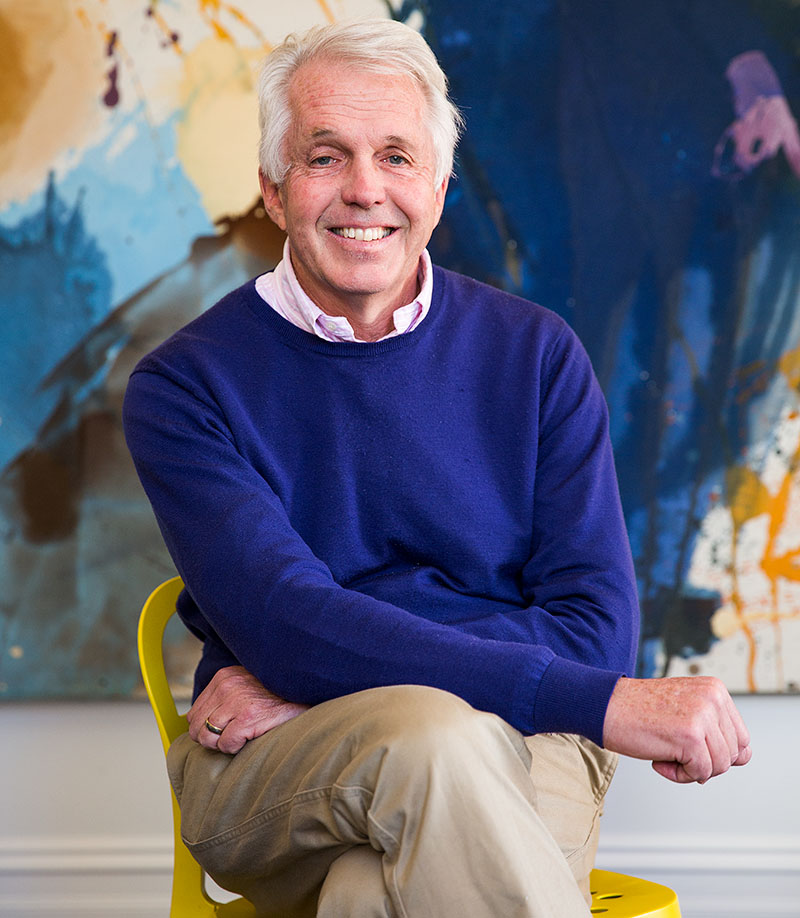
What drives you to do pro bono work?
“It’s part of a broader ethos of helping communities generally. I think the best thing we can do is be grounded in community and I use it with intention because it’s about the relationship you have with people and having empathy with the needs of the community. That’s the prime motivator in our work. We do a lot of work for all sorts of clients. At the end of the day, it’s the hope that you give these people and that’s what drives us.”
Do you think it’s hard on an architectural office to manage pro bono community work?
“It’s about beliefs, and the need to feel more connected to people. We find a lot of people in our office – and generally these days – are so busy behind computer screens. In contrast to the day-to-day work of reading legislation or managing the building certificates they love the chance to work with community. So, I get a young person and they relish the opportunity get outside to meet the public, to work with various community stakeholders. So, the human contact is really important in our industry.”
“Pro bono work can be hard, and it does add to the office workload. But it is obviously worthwhile and rewarding, and people, particularly the younger team members, are also looking for these values in their work.”
It must be a great way to introduce younger architects to working with the community to build consensus and to define what is needed. Managing the hopes and dreams of a community that has faced hardship is an incredibly useful skill to develop.
“Yes, you’ve got to listen to people, you have to pay respect to the individual members, and I like public consultation. It can be time consuming but there is a lot to get out of it, from getting a legitimacy and growing the community support. I wish we’d done more; you can ask to have a small public meeting even before you started a proposal and meet the neighbours and introduce the idea of what is being considered.
You recently hosted a community session with RSL Chair, Glenn, and the community about the project. How was that received?
“It was a great session. That was really well attended, and it was just a joy. People felt really happy afterwards. I found they entered the meeting with a bit of trepidation and left feeling, you know, pretty happy and pretty joyful about the work that was been done.”
“The RSL can be seen as an organisation from a different era, but the RSL wants to be relevant to contemporary Australia and that was also one of my motivations. The project is to help the RSL find a use for this disused community hall and get it back to being a space to be used regularly by the community. So, they can have yoga and Pilates events, or wedding ceremonies in the area.”
How do you think we get more architects involved?
“Architecture is a hard business and you are constantly battling with things, but I believe there’s a vein of architects out there who are really good people who want to do these projects, but they are unsure where to start.”
For the Cobargo RSL project you were introduced to Taubmans through the the Institute to contribute to this project, and you said yes, without a moment’s hesitation, which was incredibly valuable.
“I would never say no to a good initiative, it is just great.”
Where can architects start if they want to contribute to supporting community projects like this?
“The Architects Assist website is the perfect place, follow the prompts to submit your services to the Architects Assist program.”
